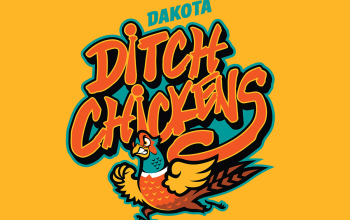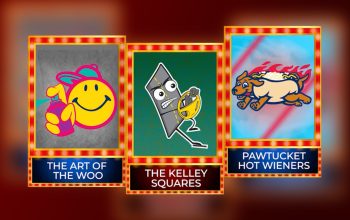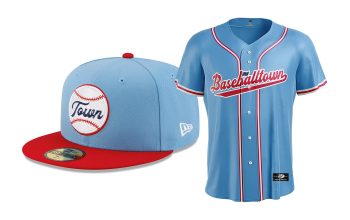The logo for the Fort Myers Miracle, Class-A Advanced affiliate of the Minnesota Twins since 1992, portrays a peaceful, beachy scene that makes you want to kick your feet up an enjoy a drink with a pineapple wedge and a tiny umbrella in it. The scene, however, belies the team’s tumultuous nickname-related past, and a fair amount of ill will that existed between them and Major League Baseball’s then Florida Marlins in the early 1990s.


The Miracle franchise began in 1926 as the Fort Myers Palms, which lasted only one year. In 1927, they moved and became the Miami Hustlers, which is the greatest name ever and should never have been changed. But the Florida State League shut down midway through the 1928 season, and the Hustlers were no more. The franchise would lie dormant until the 1960s, when they were reborn as the Miami Marlins. They became the Miami Orioles during the 1970s, then changed back to the Miami Marlins for most of the 1980s.
The team was purchased before the 1989 season by a group called the South Florida Baseball Club Limited Partnership, and the new owners renamed the team the Miami Miracle.
“They were looking for a new name for the team when they took over ownership of the team in the mid 1980s,” said Steve Gliner, Chief Operating Officer for the Fort Myers Miracle. “The team had gone through some tough times in the Miami market prior to their ownership so they were looking to give it a new name.”
And the reason for the name they chose? “The name ‘Miracle’ was simply alliterative,” Gliner said. “There was apparently no other real reason for the name.”
While Steve Gliner is totally accurate that there is nothing specific about the name Miracle that makes it appropriate for a baseball team in Miami, the team’s general manager at the time, E.J. Narcese, did float out a couple of (tenuous) explanations at the time of the change. Quoted in a Sun Sentinel article from 1989, he said, “The Miracle name comes from a couple of different things. We conducted our negotiations in the Miracle Mile area (of Coral Gables). We also think the name is very fitting for a city that has taken in over half a million people in the last eight years.”
After that first season as the Miracle, the team was sold again to the Goldklang Group and played for two seasons in Pompano Beach, just north of Miami. But when Major League Baseball’s Florida Marlins came to town, they laid claim to the market and the minor league team was forced to move. The Miracle returned to their birthplace across the state, where those long-ago Palms played in Fort Myers in 1926. Rather than rename the team again, they kept the name Miracle, but there were a couple legal T’s to cross and I’s to dot.
“The name stuck and stayed with the team from Miami, to Pompano Beach, to Fort Myers,” Gliner said. However, “the team did still own the name Marlins, and when the major league club was born, it wanted to acquire the name from Marv Goldklang.”
The Miracle contended that the Marlins appropriated the name without compensating them for it, and never followed the proper protocol for laying claim to the name or the Miami market. They filed a lawsuit, which an October 20, 1992, article in the New York Times outlines:
The name Marlins, the suit says, was for years the name of the Miami minor league team that was founded in the 1920s…. The owners of the Marlins gained their name fraudulently, the suit charges. The Miracle partnership accommodated the request for the name, it says, “with the clear understanding and expectation” that it would receive “just and reasonable compensation” under baseball agreements.
The Miracle would lose that suit in a mess of confusion related to whether Bud Selig was actually the commissioner at the time and what the makeup of an arbitration panel should look like, but the whole thing contributed to an overall sense of underhandedness related to the arrival of the Florida Marlins in Major League Baseball. (If you’re interested, the case and its subsequent ramifications are outlined nicely in the book In the Best Interests of Baseball: The Revolutionary Reign of Bud Selig, by Andrew Zimbalist.)
 So the team’s visual identity, an irrefutably pleasant beach scene, is a welcome diversion from the angst surrounding the team’s past. The Fort Myers Miracle’s original logo in 1992 and its current version, in use since the 2011 season, were both designed by Dan Simon of Studio Simon. In fact, the first Fort Myers Miracle logo, which Simon worked on with his then design partner Peter Thornburgh, was the first sports identity produced by the now-prolific Studio Simon.
So the team’s visual identity, an irrefutably pleasant beach scene, is a welcome diversion from the angst surrounding the team’s past. The Fort Myers Miracle’s original logo in 1992 and its current version, in use since the 2011 season, were both designed by Dan Simon of Studio Simon. In fact, the first Fort Myers Miracle logo, which Simon worked on with his then design partner Peter Thornburgh, was the first sports identity produced by the now-prolific Studio Simon.
And this project was not without its conceptual challenges. “From a design standpoint, it has proved to be the single most challenging name I’ve ever had to work with,” Simon said. “What exactly is a miracle? Most of the instances of it are specific to religious miracles. Incorporating Jesus walking on water is not really going to be a good or an appropriate piece of artwork for a sports identity.”
When Dan Simon and the team revisited the logo in advance of the 2011 rebrand, they discussed the possibility of connecting the visual identity to the nickname, but even with almost 20 years to mull it over, the basic roadblock was still in place. “In talking with Steve Gliner about what we might do to update the brand, we talked for years off and on about what we could possibly do,” Simon said. “Even though we bandied about numerous possibilities, coming up with something concrete for ‘What is a miracle?’ was something that eluded us.”
Instead of connecting to the Miracle part of the name, Simon explains, the logo connects to the Fort Myers part, reflecting its nickname, the city of palms. The 2011 update added the element of an actual beach at the request of the team, because Fort Myers and the surrounding areas are noted for their beaches.
After years of the sand shifting beneath this franchise’s feet, they seem to have settled in nicely as the Fort Myers Miracle. It’s been more than a quarter-century since any major upheaval, and while no one quite seems to know the reasons for the name (or even if those reasons exist in the first place), theirs is a well-established and well-liked identity. And now I’m ready for that pineapple-umbrella drink.














